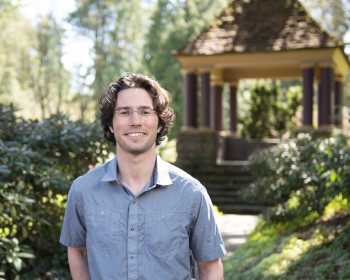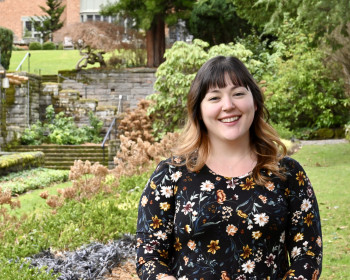COVID Update, Oct 26, 2021
Dear students, faculty and staff,
As the college continues to report positive COVID-19 cases, many of you have begun to ask whether you should be concerned.
Are we seeing an unusually high number of cases? Are you at risk in your dorm or in the classroom? How can you know if you’ve been exposed?
We understand why community members are worried–and a bit confused. There have been a number of COVID-19 notifications recently, and the information they contain is pretty formulaic. Following is an attempt to provide a more thorough picture of the current state of COVID-19 on campus, including the number of positive cases to date, what we do to respond to them, and the specific steps we are taking to limit the spread of COVID-19 in our community.
How many Covid-19 cases have there been at Lewis & Clark since the beginning of fall semester–and what impact are they having on the college’s ability to continue to provide educational services?
A total of forty-three Lewis & Clark students, faculty, staff and contractors have tested positive for COVID-19 so far this semester. We have conducted careful contact tracing on every one of these cases, and close contacts have been tested per CDC recommendations. We have yet to identify any cases of transmission of COVID-19 in the classroom–or as the result of brief, casual contact–based on this contact tracing. In fact, it has been rare for any vaccinated community member identified as a close contact, and therefore theoretically exposed to the virus, to subsequently test positive for the virus.
There have been a few cases where a community member who was positive for COVID transmitted the virus to a close contact. But nearly all of these cases have involved roommates, housemates, partners or other situations where an individual had routine and close contact (without masks) with an infected person over a substantial period of time. For example, five of the seven undergraduate students who tested positive in the last ten days were involved in the same extracurricular activity that brought them into frequent close contact with one another.
How can you be certain that 43 is an accurate count of the number of cases on campus? Last year the college conducted regular surveillance testing, where you randomly tested a certain percentage of the campus community on a regular basis. This year you only seem to test when someone has symptoms, or is identified as a close contact of a positive case.
We have administered a total of 2,543 COVID-19 tests so far this fall–and we continue to test between 100 and 150 community members each week. Community members being tested are those most likely to test positive for COVID-19, including symptomatic students, unvaccinated community members, and close contacts of positive cases. We are monitoring the test positivity rates from this testing to determine what additional measures might be needed to reduce transmission on campus. To date:
-
At the start of the semester, we implemented an entrance testing program during which we administered 1,582 COVID-19 tests to undergraduate residential students, identifying seven positive cases, for a positivity rate of 0.44%.
-
Since that time, we have administered another 538 tests in our weekly testing clinics for asymptomatic individuals. These tests have been targeted at unvaccinated community members and community members exposed as close contacts. (A close contact is defined as someone who has been within six feet of an infected person for 15 minutes or more over a 24-hour period.) In these weekly clinics, we have identified a total of three COVID-19 cases in asymptomatic students, for a positivity rate of 0.56%.
-
We also have administered 402 tests in the Health Service to symptomatic students, with eight positive results, for a positivity rate of 1.99%.
-
In addition, we are tracking off-campus positive tests, and are aware of 26 off-campus positive tests for Lewis & Clark community members.
-
Altogether, between the Health Service testing of symptomatic close contacts, and our weekly testing clinics for asymptomatic close contacts, we have tested about 275 close contacts of infected community members, with a test positivity rate of about 2.9%. That rate is well below the Multnomah County test positivity rate of 5.0%.
Given the frequency of our testing and our ongoing low weekly positivity rates, we have concluded that it is not necessary to expand surveillance testing at this time. That said, we are keeping a very close eye on the number of cases and trends in weekly case positivity rates and are prepared to shift course if the data supports that.
While we seem to be getting a lot of LC Bulletins about positive COVID-19 cases, they really don’t provide much helpful information about who gets informed about the case, how they are informed, what kind of follow-up testing you do, etc. So can you share with us exactly what happens from beginning to end after learning that an individual has tested positive for COVID-19?
Wellness staff are informed when students report symptoms or diagnoses, or when employees report diagnoses. At that point, Wellness staff:
-
Guide positive cases into isolation, and review access to food, medication and academic support.
-
Interview the positive case to determine close contacts.
-
Collaborate with the academic dean’s office to obtain information about seating and spacing in the classroom, to support identification of close contacts.
-
Arrange for disinfection of living spaces, if the student lives on-campus.
-
Contact close contacts by phone or e-mail, to provide public health guidance and support.
-
Per CDC guidelines, arrange for any follow-up testing for vaccinated close contacts 5-7 days after last exposure; guide unvaccinated close contacts into a 14-day quarantine.
-
Provide medical monitoring and case management support to students in isolation and quarantine on campus, and to students off campus who need such support.
It is very inconvenient to have to self-isolate with only minor symptoms. Is that really necessary?
Symptomatic individuals should isolate as soon as they have any COVID-19 symptoms. Remember that in fully vaccinated individuals, COVID-19 symptoms can mimic the common cold. Wellness staff have seen situations where an ill community member had cold-like symptoms, and circulated for several days, before being tested and getting a positive COVID-19 diagnosis. So it’s essential that if you have COVID-like symptoms, you self-isolate, report your symptoms, and follow medical guidance about the need to be tested.
Students should report their symptoms via both the COVID Self-Check and Report Form in the Health Information Portal AND call the Health Service during business hours (or the after-hours nurse line at 1-877-617-9531 if the Health Service is closed). Employees with symptoms should isolate, inform their supervisor and Human Resources, and follow guidance from their healthcare provider about the need for testing.
Your testing, monitoring and diagnosis protocols seem pretty thorough. So why are we seeing so many cases? You reported recently that 99 percent of the campus community is vaccinated. Shouldn’t a vaccination rate that high eliminate or severely reduce the number of cases?
No vaccine provides 100 percent protection against a disease. A certain percentage of vaccinated people are still going to get the virus, especially if they are immunocompromised or are not careful to take steps to avoid exposure. Being vaccinated does mean, however, that it is unlikely you will get seriously ill if you do contract COVID-19. That has proven to be the case at Lewis & Clark, where none of the positive cases we have seen to date have involved serious complications.
That said, even a mild case of COVID-19 will disrupt students’ ability to attend class and faculty’s and staff’s ability to do their jobs. So although we are all getting tired of wearing masks, it is important to continue to do so for the time being. It is also important to continue to wash your hands frequently and to avoid spending more than a few minutes in large, closely-packed crowds, especially if not everyone is adhering to public health precautions.
According to the news, the rate of COVID-19 infections in Oregon is dropping every week - and some epidemiologists are predicting that the worst of the current pandemic surge will be over by the end of the year. So when can we expect the number of cases at Lewis & Clark to decrease?
There are a number of variables that affect our case rates. The most important among these is how consistent community members are in wearing masks, practicing hand hygiene, self-isolating in the wake of symptoms, and following other public health guidance. Off-campus community transmission rates also affect the rate of cases on campus. While community transmission rates have recently been decreasing, local public health officials do expect there to be an increase in case rates associated with the Thanksgiving and Christmas holidays.
So, as much as we would like to, we can’t predict precisely when COVID-19 cases will begin to decline at Lewis & Clark. We can assure the campus community, however, that we will continue to monitor case counts, positivity rates, and other data trends closely to determine if and when additional measures are needed to reduce the risk of transmission.
Can you provide guidance about booster doses?
The college is closely monitoring the situation regarding booster doses of vaccine, and is exploring options about how to make these booster doses available on-campus to employees and students who qualify for them. See this FAQ from the Oregon Health Authority for the latest information about booster doses in Oregon. Higher education workers are considered frontline workers, and thus are eligible for booster doses if the requisite amount of time has passed since their last vaccine dose. We will provide updates about options for booster doses as that information becomes available.
A final word about the LC Bulletin notices. Because they come out so frequently and have such minimal information, some community members are telling us they are beginning to ignore them. So why do we send them out, and why do they say so little? Wouldn’t sending out a regular update of the sort provided here be more helpful?
We issue an LC Bulletin every time there is a positive COVID case because the Oregon Occupational Safety and Health Division requires us to notify employees within 24 hours of learning of such a case. Though we are not required to do so, we decided to also share those notices with students in the interest of full transparency.
The reason the notices “say so little” is because we are trying to balance the need for individual privacy with the need for community information. If we included the kind of detail many people are looking for, it likely would be relatively easy to identify the affected individual(s).
While the goal of protecting individual privacy is an important one, that doesn’t mean we shouldn’t look for ways to be more informative without violating that principle. We will do our best to achieve that end. In the meantime, we hope this update has helped answer some questions and alleviate some concerns. Let us know if you find it helpful and we will try to send out additional updates on a more frequent basis as a supplement to notices in the LC Bulletin.
More Student Life Stories
Vice President of Student Life and Dean of Students is located in East Hall on the Undergraduate Campus.
MSC: 102
email vpsl@lclark.edu
voice 503-768-7110
Vice President of Student Life and Dean of Students
Dr. Evette Castillo Clark
Vice President of Student Life and Dean of Students
Lewis & Clark
615 S. Palatine Hill Road MSC 102
Portland OR 97219

